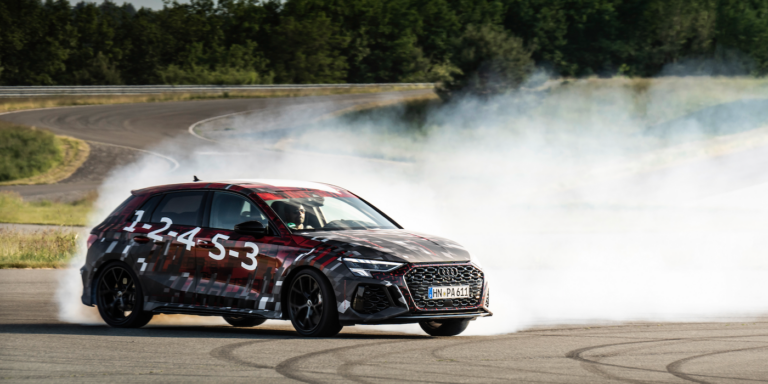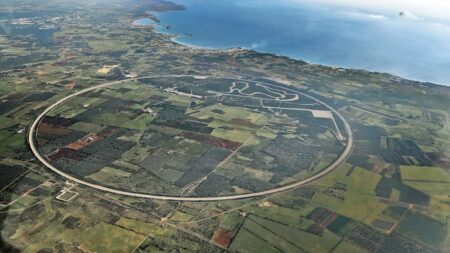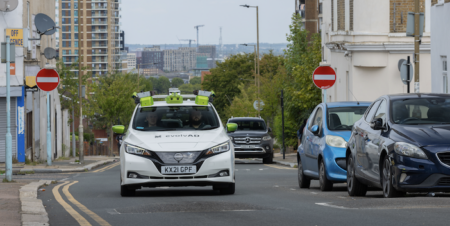The 2021MY RS 3 is Audi’s first vehicle to be fitted with the newly developed RS Torque Splitter, a device which enables active, fully variable torque vectoring between the rear wheels. Unlike the previous model’s rear axle differential and the multiple disc clutch package on the rear axle, the new model’s torque splitter uses one electronically controlled multiple disc clutch each on the respective drive shaft.
When the car is driven hard around corners, the torque splitter increases the drive torque to the outer rear wheel with the higher wheel load, which reduces the vehicle’s tendency to understeer and helps the car follow the steering angle more precisely. In left-hand curves, the system transmits the torque to the right rear wheel, in right-hand curves to the left rear wheel, and to both wheels when driving straight ahead. The torque splitter can also help drivers achieve controlled drifts by applying all of the engine power to just one of the rear wheels – up to a maximum of 1,750Nm of torque. The exact distribution of drive torque depends on the mode selected in Audi drive select and the respective driving situation.
Each of the two multiple disc clutches has its own control unit, which use the ESC’s wheel-speed sensors to measure the wheel speeds. Other influencing factors include longitudinal and lateral acceleration, the steering angle, the position of the accelerator pedal, the selected gear, and the yaw angle (the rotational movement around the vertical axis). In addition, the torque splitter is connected to the modular vehicle dynamics controller as what Audi calls a ‘higher-level entity’.
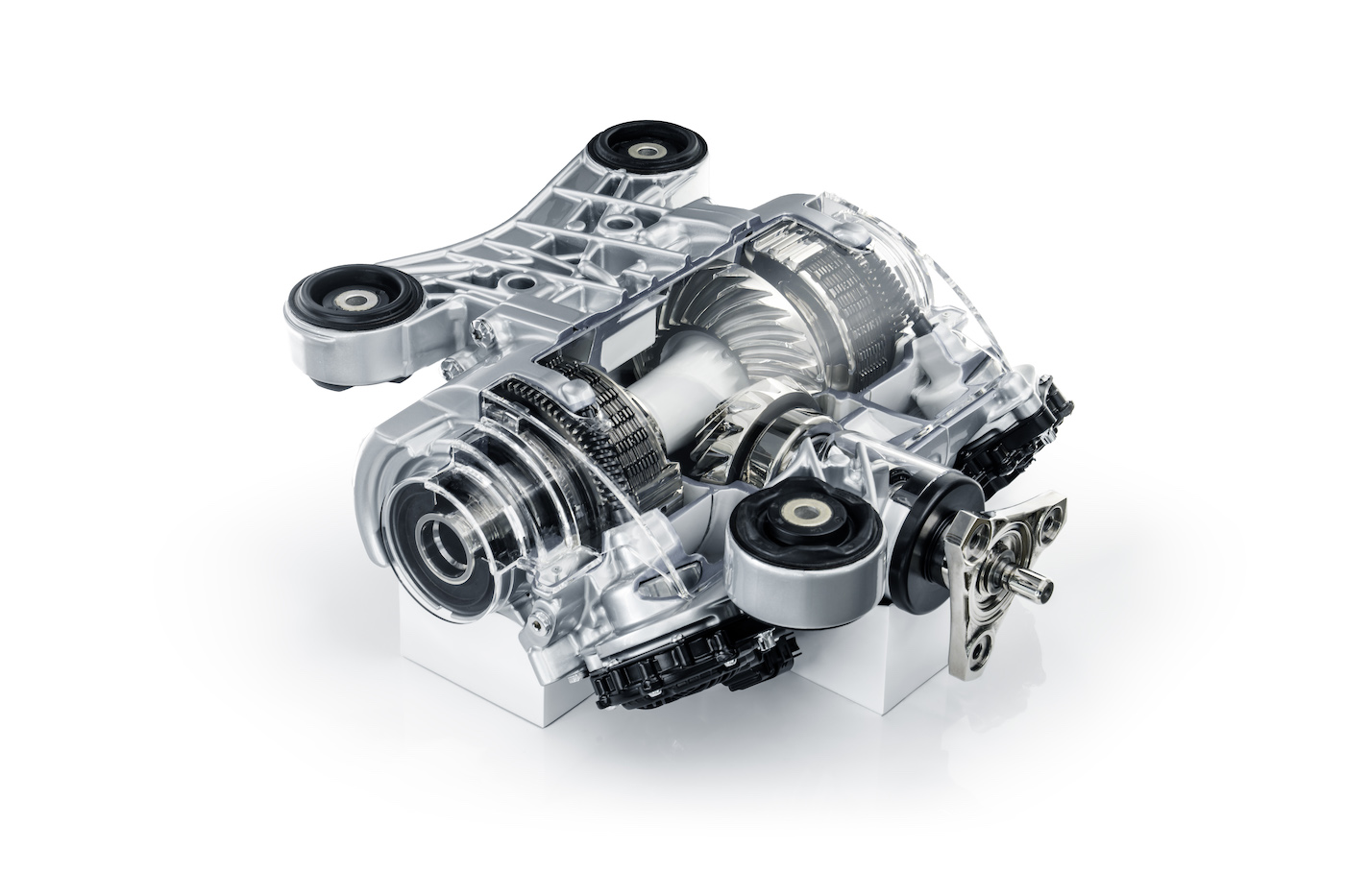
Vehicle dynamics controller
The new RS 3 also makes use of the modular vehicle dynamics controller (mVDC), as fitted to the A3 and S3. This central system captures data from all the components relevant to lateral dynamics and then synchronises the torque splitter’s two control units, the adaptive dampers, and the wheel-selective torque control, to enhance the precision of steering and handling and increase the agility of the vehicle.
Drivers can select from seven driving dynamics modes, of comfort, auto, dynamic, efficiency, RS Individual, RS Performance und RS Torque Rear via the ‘Audi drive select’ system. Each mode alters the characteristics of powertrain and chassis components, changing the dynamics emphasis from comfort through to highly dynamic or even a setting optimised for track driving. In addition to the torque splitter, the system also alters the characteristic curves of the engine and transmission characteristics, steering assistance, adaptive dampers, and exhaust flaps.
The ‘Audi drive select’ system modifies the characteristics of the torque splitter and thus the car’s handling. Five characteristic curves, of Comfort/Efficiency, Auto, Dynamic, RS Performance, and RS Torque Rear, are saved in the system. Engine power is distributed to all four wheels in the Comfort/Efficiency modes, with priority given to the front axle. In Auto mode, torque distribution is balanced, which means that the RS 3 neither understeers nor oversteers. Dynamic mode tends to transmit as much drive torque as possible to the rear axle, for maximum agility and increased dynamics. In RS Torque Rear mode, drivers are helped to perform controlled drifts on closed roads, with the rear-biased distribution of the engine power leading to oversteer, with up to 100% of the drive torque directed to the rear wheel on the outside of the curve.
Audi’s engineers have also adjusted the engine and transmission characteristics for RS Performance Mode, which is designed for the track driving and specially tuned for Pirelli P Zero ‘Trofeo R performance semi-slick tyres, which are a factory option for the first time on the new RS 3. In this driving mode, the torque splitter delivers a particularly dynamic, sporty ride along the longitudinal axis with as little understeer and oversteer as possible. This results in fast acceleration out of corners and thus better lap times.
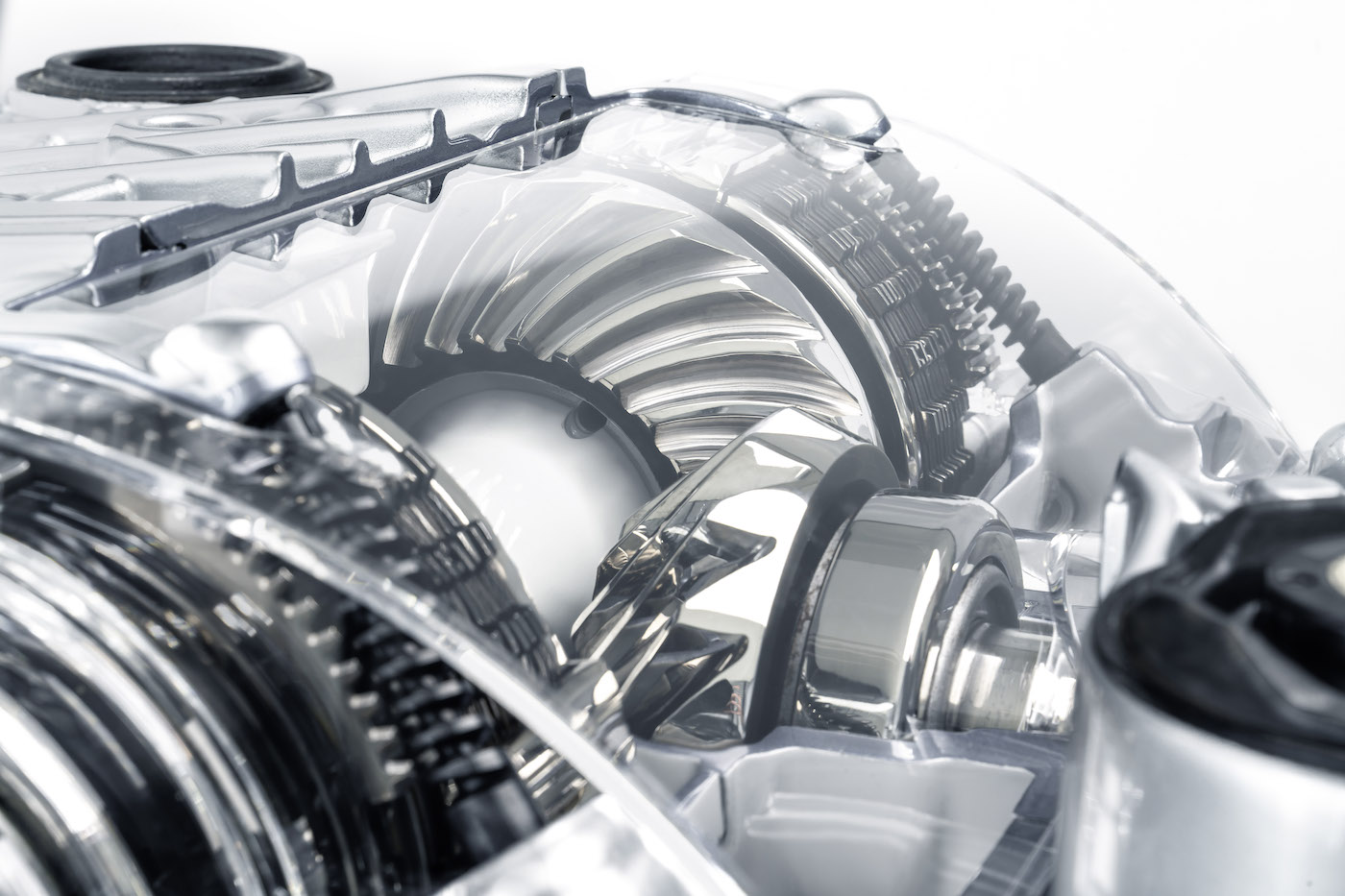
Electronic stability control
With all these changes for the RS 3, the electronic stability control (ESC) in the RS 3 has had to be specifically tailored to the torque splitter, suspension, tyres, and the new driving modes. It operates even faster and more precisely than in the previous model. The ESC can be set to a Sport mode, and the RS Performance driving mode is set to ESC Sport at the factory. For sporty driving the ESC can also be switched off completely by holding down the button in the centre console for longer than three seconds.
Shock absorber configuration
The standard RS sports suspension features newly developed shock absorbers and a valve system, both of which are specific to the RS 3. The valves ensure that the shock absorbers exhibit a sensitive response as part of the rebound and compression characteristics, allowing the suspension to respond to the respective driving situation faster and more effectively.
Owners can also specify an RS ‘sport suspension plus’ package with adaptive damper control. The system continuously and individually adjusts each shock absorber to the road conditions, the driving situation, and the mode selected in Audi drive select. The three characteristic curves, of comfortable, balanced, and sporty, provide a perceptible spread of the shock absorber characteristics. The ideal damping force is calculated within milliseconds, with sensors measuring the vertical acceleration of the body and the movement of the individual wheels relative to it, with low force for hard bumps, and high force to support the vehicle body during rapid cornering or braking.
In RS Individual mode, the shock absorbers can be configured according to individual preferences and the road conditions within the three characteristic curves. In RS Performance Mode, a specific comfort setting for the shock absorbers minimises vertical excitation and provides optimum support for smooth lateral dynamics – this is suitable for tracks with uneven surfaces, such as the Nordschleife.
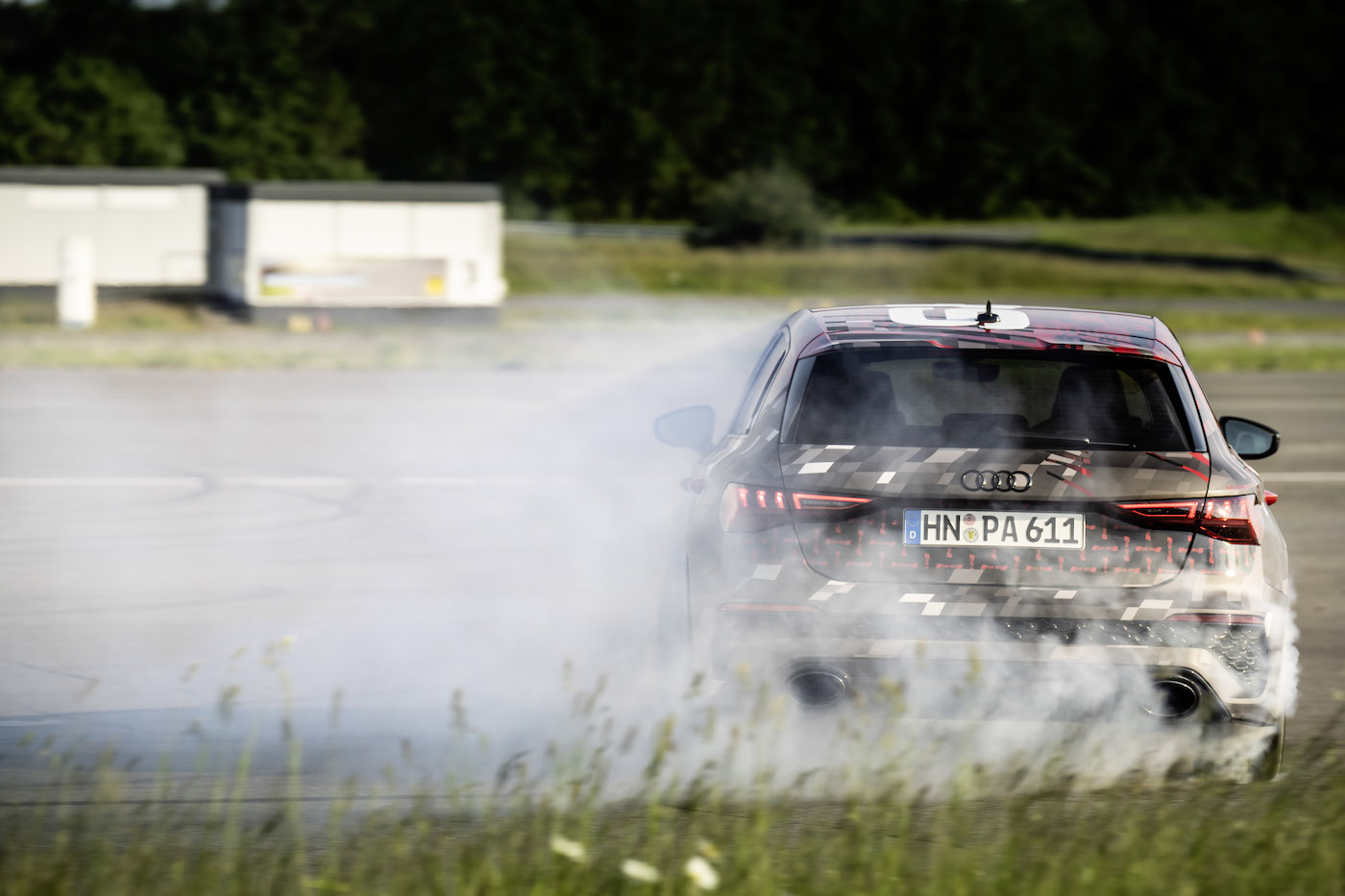
Other dynamics components
The setup of the springs and shock absorbers is what Audi describes as “markedly stiff”, and the body is 10mm lower than on the S3, and 25mm lower than on the A3, for a lower centre of gravity. A McPherson strut suspension with RS 3-specific pivot bearings is fitted at the front, with stiffened lower wishbones, subframes, and stabilisers. In order to provide more grip in corners and more dynamic cornering, the RS 3 has just under 1° of additional negative camber compared to the A3, giving a more precise steering response. The rear axle features a four-link design with separate spring/shock absorber arrangement, subframe, and tubular stabiliser bar adapted to the torque splitter. Reinforced wheel carriers increase lateral dynamics as well as response to steering inputs and thus vehicle agility.
The RS-specific progressive steering varies the gear ratio depending on the steering angle, so that as the steering angle increases, the gear ratio becomes smaller and steering more direct. The steering also assists based on speed and can be varied via Audi drive select within the three characteristic curves.
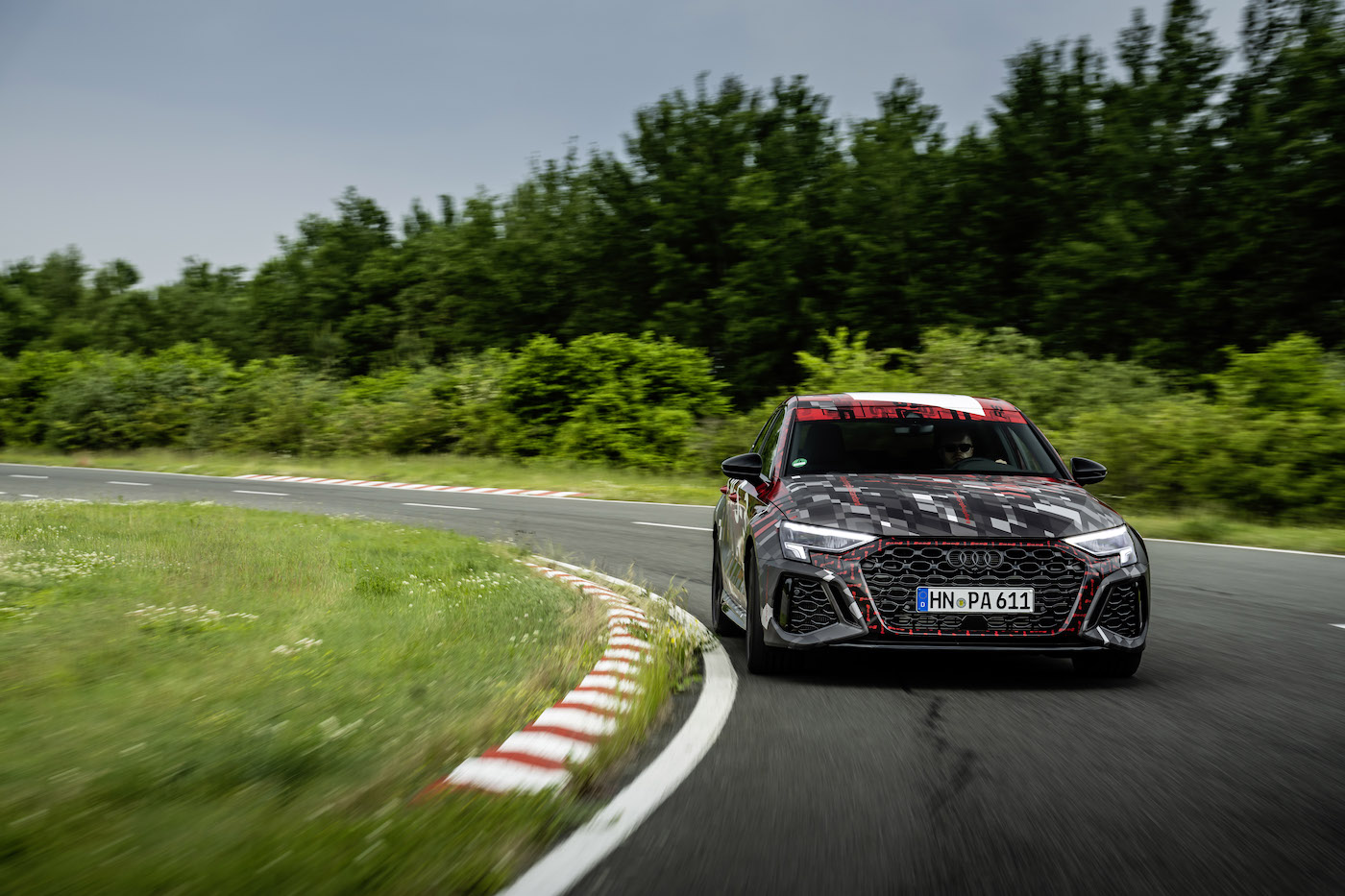
Power
The RS 3 is powered by a 400PS, 2.5-litre five-cylinder engine with 500Nm of torque – 20Nm more than the previous model – and a 7,000rpm redline. This unit can power the RS 3 from zero to 100km/h (62mph) in 3.8 seconds (0.3 seconds faster than before) and a top speed of 290km/h A new engine control unit also increases the speed and intensity at which all of the drive components communicate with each other for faster response, especially in the low rev ranges.
The Sedan and Sportback have a top speed of 250km/h (155mph), although 280km/h (174mph) is also available as an option, and with the RS Dynamic package and ceramic brakes, the top speed can reach 290km/h (180mph).
A seven-speed dual-clutch transmission puts the power on the road, with a right-angle drive with a more robust design that takes account of the increased torque and the sportier gear ratio spread.


